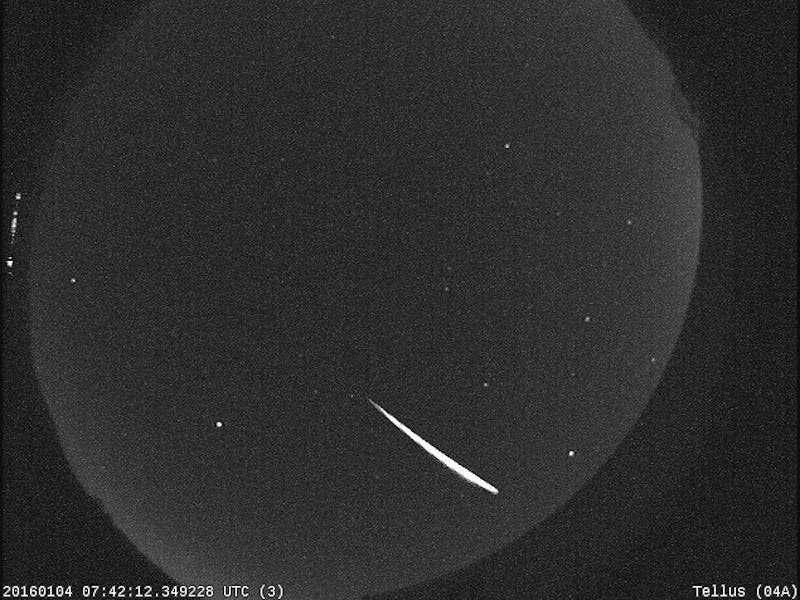The Quadrantid meteor shower: How to watch 2020's first cosmic light show
Kick off the New Year with this stunning astronomical display.

When it comes to space and astronomy, 2020 is set to be an action-packed year. And, fittingly, it kicks off in style, with a short-lived but breathtaking meteor shower that has a mysterious cosmic origin.
Here’s all you need to know about 2020’s first meteor shower of the year.
When to watch
The Quadrantid meteor shower begins on January 3 and 4 2020, but the shower peaks at between 60-100 meteors per hour over the course of just a few hours. Although they have a narrow peak window compared to other meteor showers, like the Geminids, the Quadrantids are considered to be one of the best because they are fireball meteors. Fireballs come from larger particles of matter, which means they are much brighter, and their light and color lasts longer than your average meteor shower.
Astronomers expect the shower to grace the sky late night on January 3, and last until the early hours of dawn on January 4. The shower is better viewed in the Northern Hemisphere since it appears to originate from a northern point in the sky.
This year, the shower will peak at 8 a.m. GMT on January 4, according to the International Meteor Organization. For stargazers on America’s East Coast, that means peak viewing will be at around 3:00 a.m Eastern.
Where to watch
Although you don’t need any type of special equipment to view this meteor shower, the short peak window means you do need to set an alarm to have a chance of catching it.
A Quadrantid meteor captured by a camera at NASA's Marshall Space Flight Center.
It is best to find a location far removed from interfering light, and to block out any kind of flashlight or electronic devices. You should allow for your eyes to get accustomed to the dark for about 30 minutes before viewing time.
The good news is that the Moon’s waxing phase, in which it grows and is therefore brighter, will have ended by the time of the shower. So there will be no strong interfering light from the Moon.
Where do the Quadrantids come from?
Meteors are made up of debris from comets or asteroids. On its orbit around the Sun, the Earth passes through some of that debris, causing it to collide with our planet’s atmosphere. As the debris flies through our atmosphere, the particles start to disintegrate and burn up, creating the bright streaks of light we see in the sky.
Although most meteors come from icy comets, the Quadrantid shower is thought to come from an ancient asteroid. The origin of the meteor shower was identified in the year 2003 as Asteroid 2003 EH1, which orbits the Sun roughly every five and a half years.
The Quadrans Muralis constellation may be the origin of the Quadrantid meteor shower -- or not.
To complicate the origin story slightly, this small asteroid, which measures about two miles across, may have once been a comet.
The radiant point in the sky from which the meteor shower appears to come from is also obsolete. The Quadrans Muralis constellation — the supposed origin point — was discovered by French astronomer Jerome Lalande in 1795. But the International Astronomical Union left the constellation off is list of recognized constellations in 1922.
Because of its murky origins, the meteor shower is also referred to as the Bootids, since it also appears to originate from between the still-recognized constellations of Bootes and Draco. But wherever it comes from, we know one thing: It is bound to be spectacular.